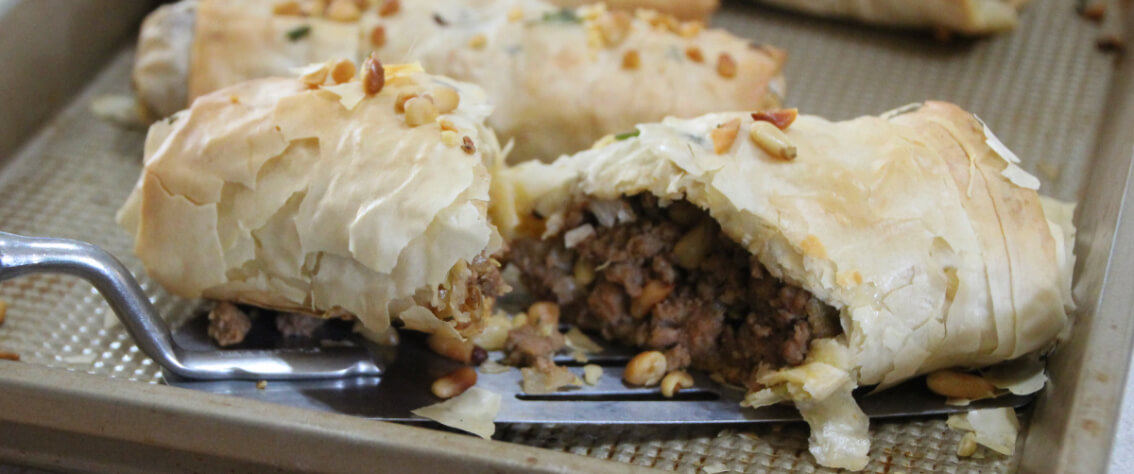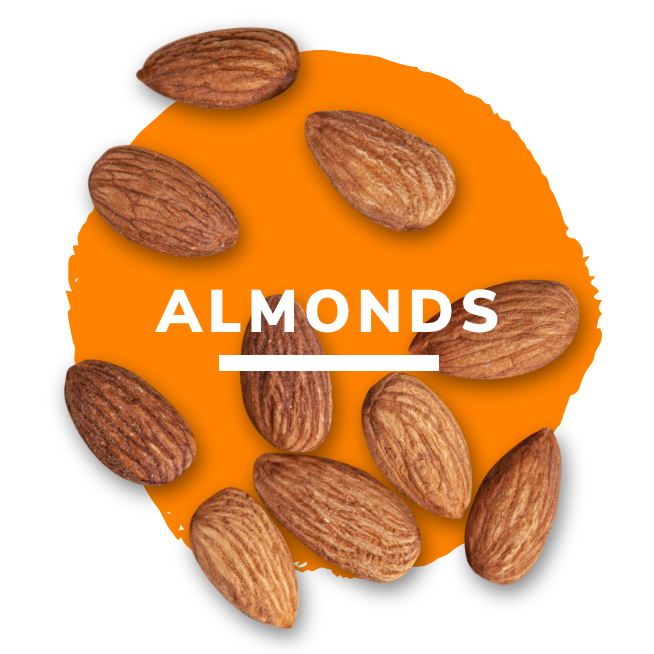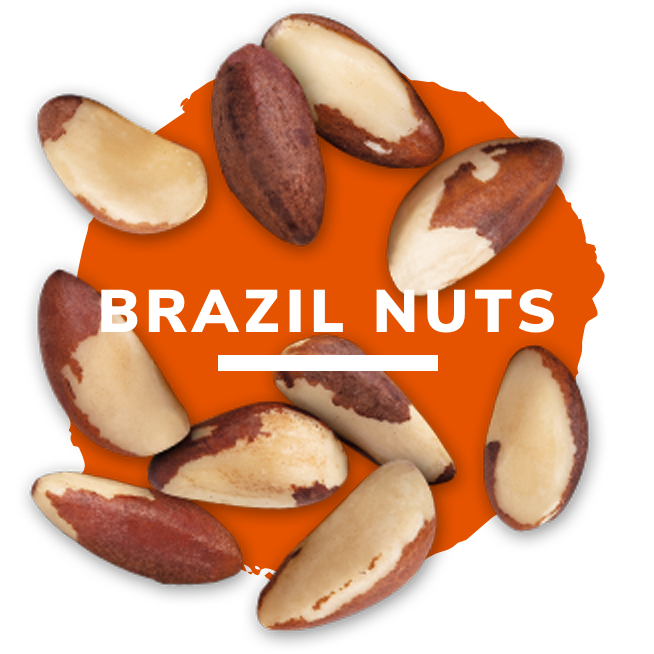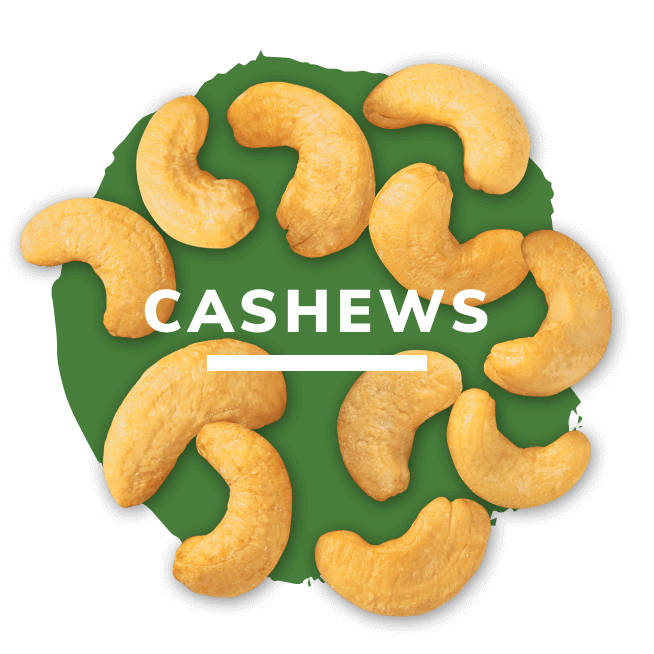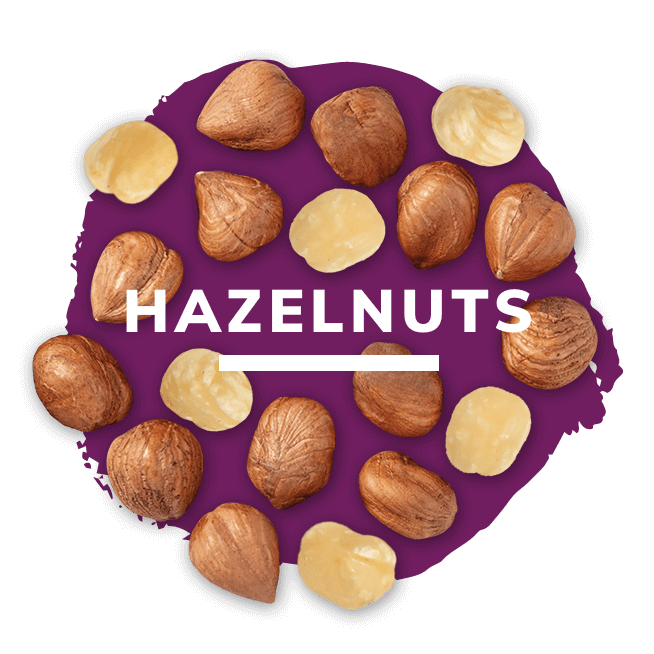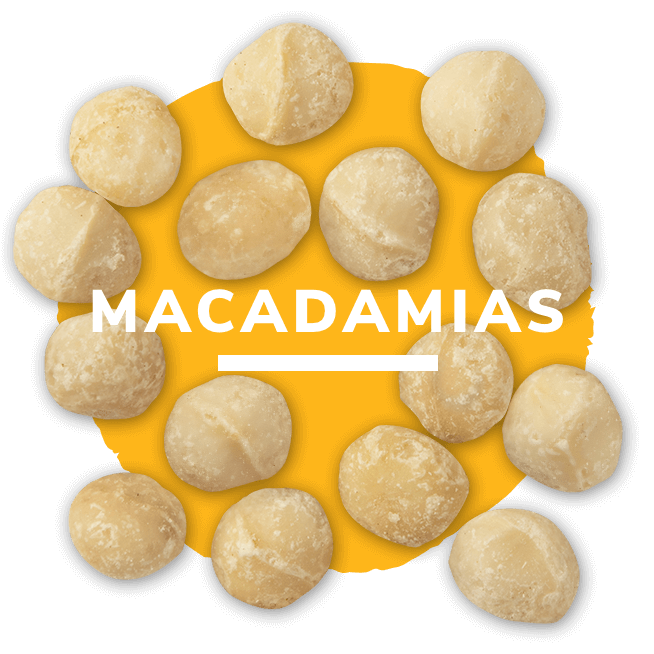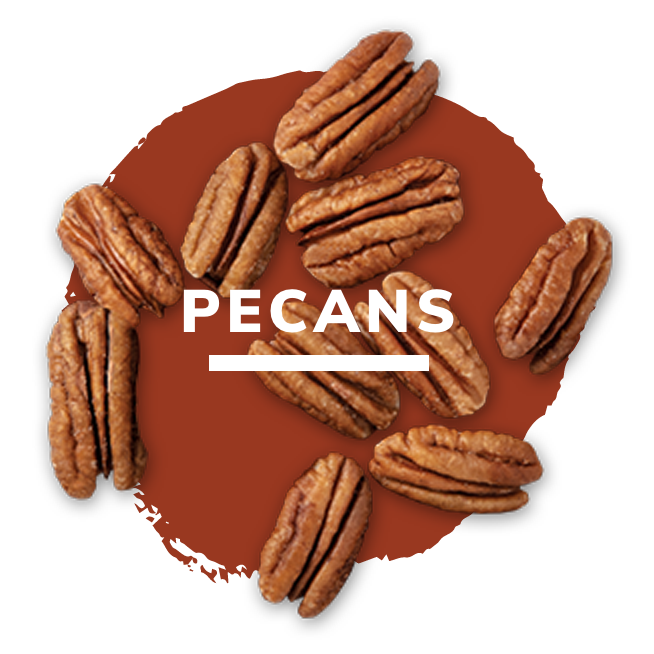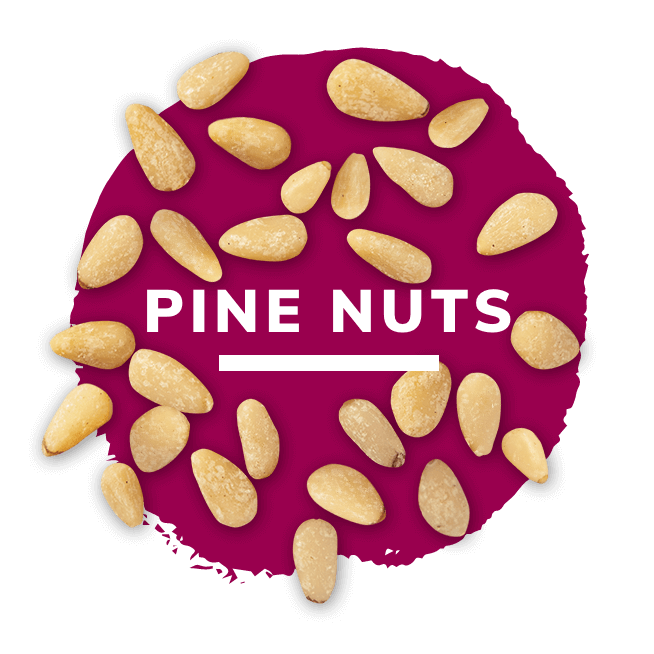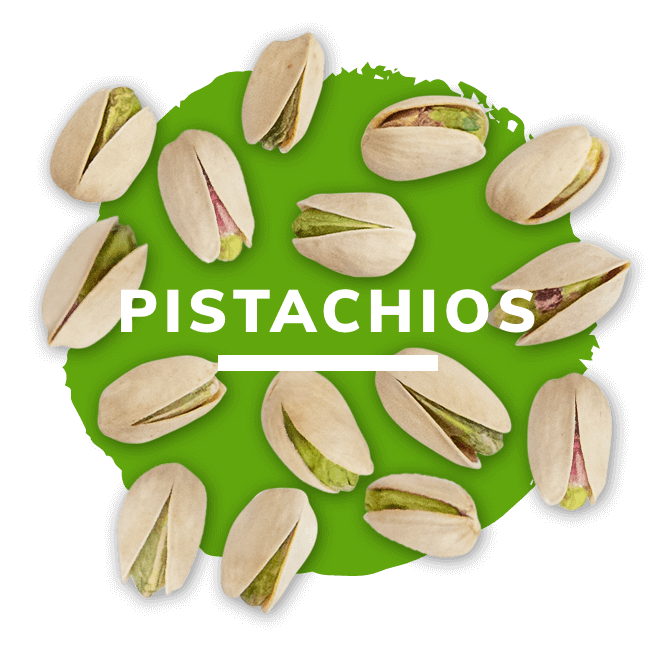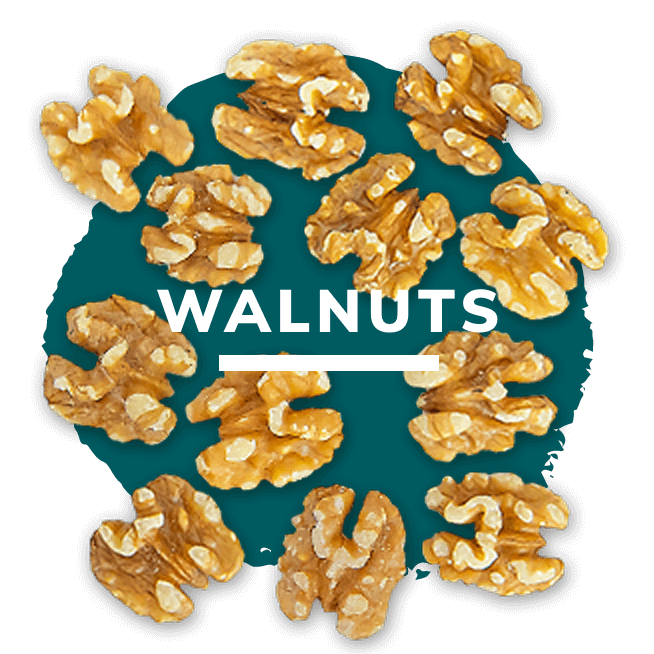Pine Nuts

Overview
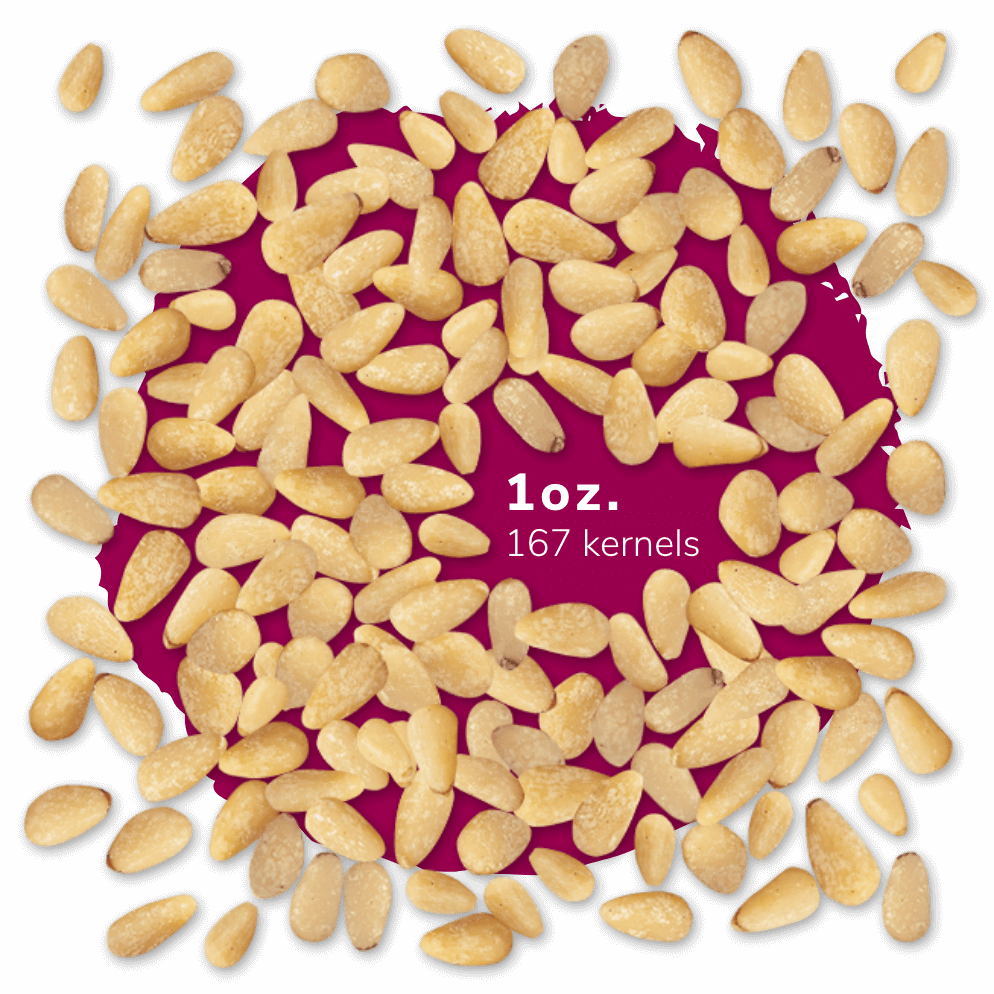
A 1-ounce serving of pine nuts provides:
Dietary Fiber
- 1 gram of fiber: 4% of the Daily Value
Protein
- 4 grams of plant-based protein
Healthy Fats
- 20 grams of total fat: 27% is from monounsaturated fat and 50% from polyunsaturated fat
Nutrient-Dense
- Excellent source of vitamin E, copper, manganese
- Good source of vitamin K, magnesium, phosphorus and zinc
- Sodium-free
Looking for tips and tricks?
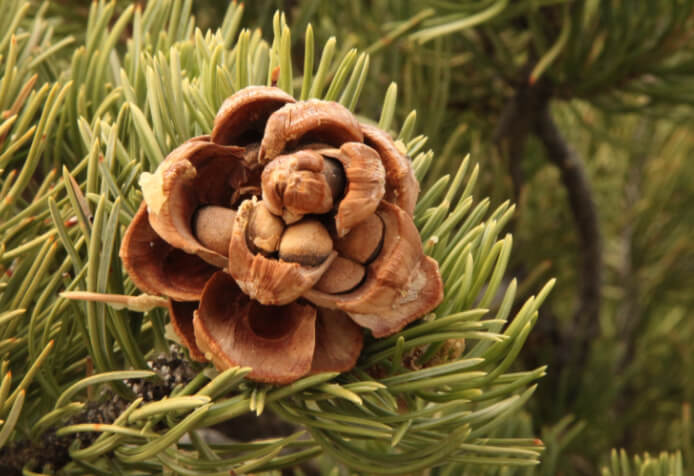
Pine cone
PINE NUTS NUTRITION FACTS
Serving Size: 1 oz. (28.35g) Approx 167 kernels**
Amount Per Serving
- Calories190
% Daily Value*
- Total Fat 20g26%
- Saturated Fat 1.5g8%
- Polyunsaturated Fat 10g
- Monounsaturated Fat 5.5g
- Cholesterol 0mg0%
- Sodium 1mg0%
- Total Carbohydrate 4g1%
- Dietary Fiber 1g4%
- Protein 4g
- Vitamin D 0mcg0%
- Calcium 5mg0%
- Iron 1.57mg8%
- Potassium 169mg4%
- Vitamin A 2.4mcg0%
- Vitamin E 2.65mg20%
- Vitamin B6 0.03mg2%
- Phosphorus 163mg15%
- Vitamin C 0.2mg0%
- Thiamin 0.1mg8%
- Folate 10mcg2%
- Magnesium 71mg15%
- Selenium 0.2mcg0%
- Manganese 2.5mg110%
- Zinc 1.83mg15%
- Copper 0.38mg40%
*The % Daily Value (DV) tells you how much a nutrient in a serving of food contributes to a daily diet. 2,000 calories a day is used for general nutrition advice.
**Pine nuts are unsalted and unroasted.
History
The pine tree is one of the most familiar trees, both in Europe and North America, but it is mainly in the Mediterranean area where it obtains its highest importance of production and consumption. The nuts are found inside the pine cone.
Once appreciated by the Greeks and Romans, the pine kernel, or pine nut, is an edible nut with an exquisite flavor and high protein content. The Roman Legions carried pine kernels as provisions, and all over Europe it is used as a culinary ingredient in the preparation of meat, fish and vegetable dishes, as well as in the confectionery industry in chocolates and other delicacies.
China, Russia, Afghanistan, Pakistan, Turkey and Mongolia are the principal producing countries of pine kernels. Also called Indian nut, pinon, pinoli and pignolia, the pine nut is marketed in shelled form. There are two main varieties. The Mediterranean or Italian pine nut is from the stone pine. It is torpedo-shaped, has a light delicate flavor and is the more expensive of the two. The stronger flavored Chinese pine nut is shaped like a squat triangle. Its pungent flavor can easily overpower some foods.
More Tree Nuts
Tree nuts are nutrient-dense whole foods that are rich in unsaturated fats and contain protein, fiber and important vitamins, minerals and phytochemicals.
